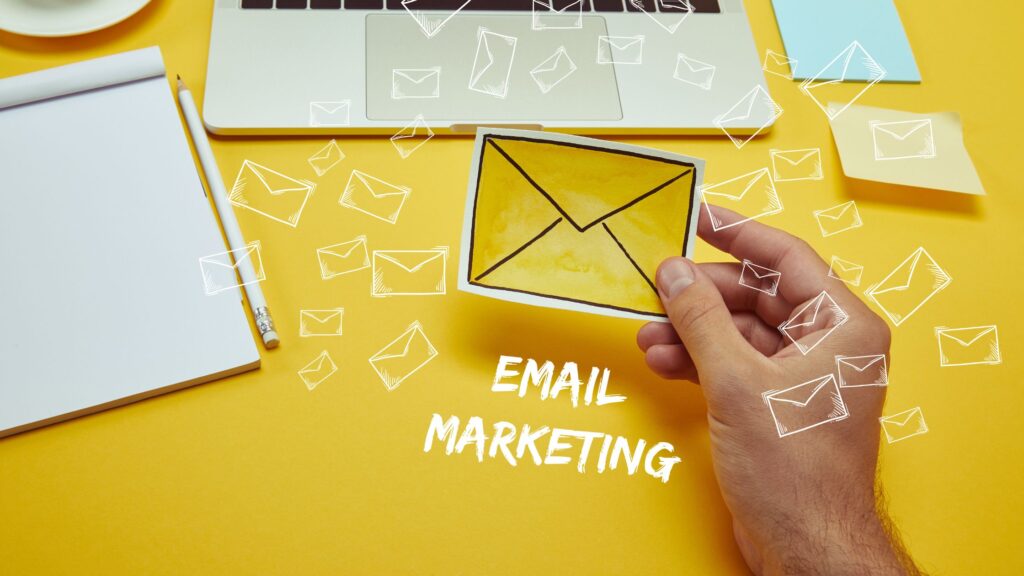
In today’s digital world, email campaign marketing is one of the best ways to connect with your audience, build relationships, and increase conversions. Yet, without a clear plan, many businesses face low engagement and weak results.
This article breaks down what email campaign marketing is, shares practical email marketing strategy examples, highlights successful email marketing strategies, and guides you in creating a strong email marketing strategy plan to improve performance and grow your business.

What Is Email Campaign Marketing?
Email campaign marketing is the process of sending well-planned, targeted, and goal-driven emails to a specific audience. These emails promote your products, services, or brand while guiding readers toward action through a structured funnel. Unlike random one-time messages, campaign emails follow a clear strategy with scheduling, automation, segmentation, and performance tracking.
A strong email marketing strategy plan ensures every campaign stays consistent, relevant to your audience, and focused on measurable business growth. Learn more about Email Marketing Strategy.
Why Email Campaign Marketing Still Works
Even with the rise of social media, SMS, and chat apps, email campaign marketing still offers unique advantages that make it an essential part of digital communication:
- Email campaign marketing allows direct communication with your audience right in their inbox.
- It delivers a high return on investment, often outperforming other digital marketing channels.
- You can personalize and segment messages for different groups, such as new leads, loyal customers, and past buyers.
- Automation tools help send follow-ups, drip campaigns, and re-engagement emails efficiently while saving time.
- The system is highly scalable, making it easy to grow from small lists to large subscriber bases.
- Comprehensive analytics track every open, click, and conversion to optimize future campaigns.
Core Components of a Strong Email Marketing Strategy Plan
To create a strong email marketing strategy plan, several key elements must work together seamlessly:
a) Audience Segmentation & Personas
Divide your audience based on interests, behavior, demographics, or purchase history. This ensures your messages stay relevant and personalized.
b) Goal Definition & KPIs
Set clear goals like click-through rates, conversions, or list growth. Track key metrics such as opens, CTR, bounces, and unsubscribes to measure success.
c) Content & Creative Strategy
Craft catchy subject lines, engaging copy, appealing visuals, and clear calls to action that align with your audience’s needs.
d) Timing & Frequency
Plan when and how often to send emails. Stay consistent without overwhelming your subscribers.
e) Automation & Workflows
Automate drip campaigns, welcome emails, cart reminders, and re-engagement flows to save time and maintain regular contact.
f) Delivery & Reputation Management
Keep your sender reputation strong by cleaning your list, using double opt-ins, and reducing spam triggers.
g) Testing & Optimization
Use A/B testing on subject lines, send times, and content, then improve your campaigns based on data.
h) Analytics & Reporting
Track performance through reports and dashboards to identify trends and make informed adjustments.

Successful Email Marketing Strategies You Should Use
Along with proven examples, here are some successful email marketing strategies you can implement for better results:
i. Personalize every message: Use your subscribers’ names, interests, and preferences to create a one-to-one experience.
ii. Use behavior triggers: Send automated emails based on user activity, such as sign-ups, downloads, or purchases.
iii. Add urgency: Encourage quick action through limited-time offers or countdown reminders.
iv. Segment your audience: Tailor emails for different groups—new leads, active customers, or returning subscribers.
v. Stay consistent and test: Keep your branding uniform, optimize for mobile, and refine campaigns with regular A/B testing.
Steps to Build Your Own Email Campaign Marketing Program
If you’re starting your email campaign marketing program from scratch, follow this simple roadmap:
Step 1: Audit Existing Assets
Review your current lists, templates, and past campaigns. Clean your list by removing invalid or inactive contacts.
Step 2: Define Your Audience & Segments
Build buyer personas and segment your email list based on behavior, demographics, or interests.
Step 3: Map the Customer Journey
Design workflows for every stage—awareness, consideration, conversion, retention, and reactivation.
Step 4: Build a Content Calendar & Email Sequences
Plan subject lines, copy, visuals, and calls-to-action that align with your campaign goals and timeline.
Step 5: Set Up Automation & Workflows
Use automation tools to run welcome emails, drip campaigns, re-engagement flows, and cart reminders efficiently.
Step 6: Design Responsive Templates
Create visually appealing, mobile-friendly email layouts that ensure accessibility for all users.
Step 7: Launch a Pilot Campaign
Test your campaign with a smaller audience first to identify any technical or content issues.
Step 8: Track KPIs & Test Variations
Monitor open rates, click-throughs, and conversions. Use A/B testing to improve subject lines, timing, and content.
Step 9: Optimize & Scale
Refine your approach based on results, then expand to larger segments and more advanced workflows.
Step 10: Maintain & Refresh
Regularly update content, clean your lists, and revisit your email marketing strategy plan to keep campaigns effective.
Measuring, Testing & Optimizing Campaigns
To make your email campaign marketing more effective, you need to measure and refine it regularly. Here are key practices to follow:
- Set clear benchmarks: Compare your open rates, click rates, and conversions against industry standards.
- Run A/B tests: Experiment with subject lines, timing, layouts, CTAs, and content to see what performs best.
- Segment by engagement: Categorize users as highly active, moderately engaged, or inactive for more targeted campaigns.
- Track deeper results: Link your emails to revenue, sign-ups, retention rates, and customer lifetime value.
- Analyze bounce and unsubscribe data: Resolve deliverability issues and remove unengaged contacts.
- Use cohort analysis: Assess how specific campaigns influence retention and conversions over time.

Conclusion
Strategic email campaign marketing helps build trust, boost engagement, and drive long-term growth. By applying successful email marketing strategies within a clear email marketing strategy plan, every email can create a real impact.
MobileRad, a Black-owned, woman-owned digital agency, enhances brand visibility through integrated digital channels—showing how effective email campaigns deliver measurable results. With focus, consistency, and smart execution, your email campaign marketing can become a key driver of business success.